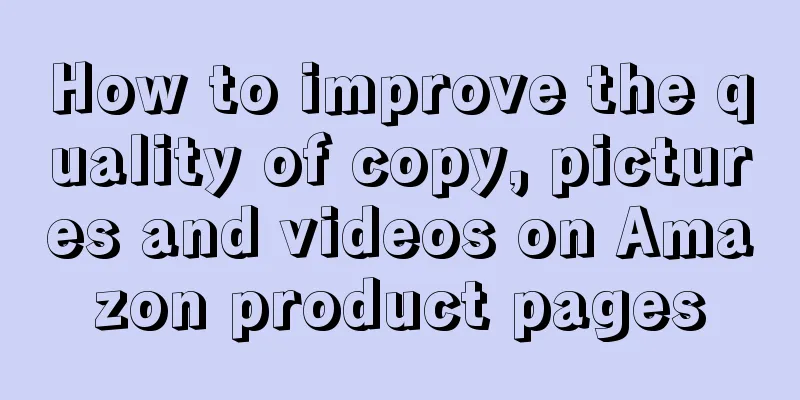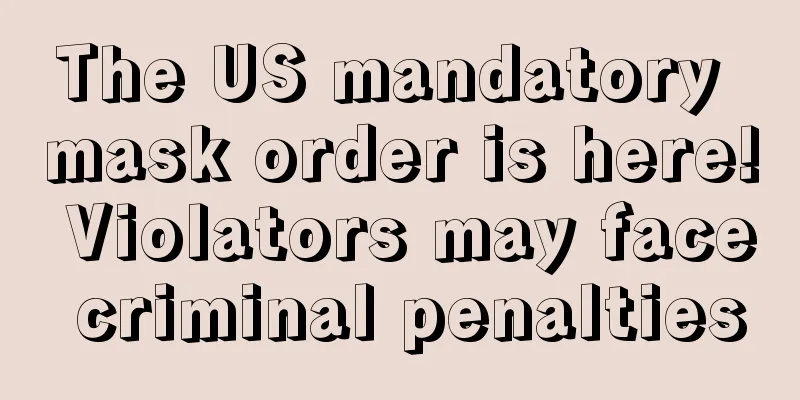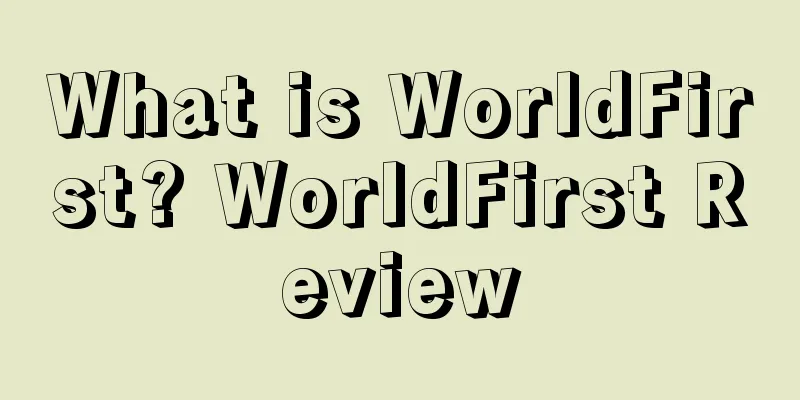How to improve the quality of copy, pictures and videos on Amazon product pages

|
In e-commerce sales, physical products are displayed on the screen in three main digital forms: text, pictures, and videos. When they are first shown to customers, unless the product is very unique, it is easy for people to forget it after seeing it because of the lack of direct feelings such as touch, trial, and smell of physical shopping. Therefore, in order to further stimulate customers’ brains and make them interested in product pages, we can only rely on comprehensive and detailed introductions, prominent selling points, and aesthetic design to express professionalism and practicality in order to attract more and longer stays. Therefore, it is necessary to think carefully about how to better display product information in these three forms. Before getting into the topic, let’s first briefly describe the customer’s psychological process when buying a product online. (After all, the page is for customers to see, so you must think from their perspective and think about what they care about. This is also the ability to think from their perspective that is needed for refined operations.) 1. Personal Shopping Simulation Most people shop online for a clear purpose and reason. Take me as an example: I want to buy a fruit knife because the one at home is a bit blunt and small. With this purpose in mind, I opened the computer version of Amazon and typed in fruit knife. A lot of options came out, which was dazzling. Because there were so many products, I clicked right into the BS. I want to know what size it is, what the handle is made of, whether it is easy to hold, what the blade is made of, what colors are available, etc. This information is clear at a glance in the selling point section, but it is only displayed in four simple pictures, which is very flat and monotonous. Then I wondered if the knife was sharp, whether it would rust, how to store it, and whether it had a cap… These issues are reflected in the A+ section, but they will only become clear if we go down further, but there is no cap. Finally, I want to see what other sellers have to say: The top comments are all good reviews, so it should be a good product. But I wanted to see what the negative reviews said. The product scored 4.8 points, which was a very low rate of negative reviews. But after reading them, I gave up on this product. Because there are 3 negative reviews on the same page saying that the knife will rust, and there are pictures, which is a flaw that I mind. I don't mind the other things like slow delivery and bent blades. Then I saw another one like this on the left. It not only had a lid, but the handle could also be hung up, making it easier to store. If the negative reviews don't have any major flaws, there is a high probability that you will choose this one in the end. The above is a brief summary of my shopping needs as an individual customer, which are both general and specific. As a seller, you also need to be able to simulate multiple operating environments, guess the needs of multiple customers and then summarize them. 2. Detailed explanation of copywriting/pictures/videos After understanding the basic needs of customers and being familiar with your own products as a seller, you can now start to conceive graphics and texts. First of all, we must understand the requirements of the Amazon platform: [Photo and Text Editing] How to edit a good Amazon product photo and text? Then the overall idea is as follows: I think the copy is the core, and pictures and videos are derivatives of the copy, or can be said to be the reflection of the copy. For example, if we use these three forms to describe a fruit knife, it is: Text version A fruit knife. Image version Video version (video section of the page) https://www.amazon.com/TUO-Cutlery-Paring-Knife-Pakkawood/dp/B01GL5G6O6/ref=sr_1_39?keywords=fruit+knife&qid=1583910841&sr=8-39 The different methods have obvious visual and sensory effects. It should be noted that if the picture quality is very poor, it is not as good as a paragraph of imaginative text~ The following is a detailed explanation: 1. Copywriting As the core copy, there are many details that can be written, mainly including the following 6 major points and 14 minor items, and the selling points can be highlighted or the disadvantages can be hidden according to the characteristics of different products. A clear and concise copy is necessary, and to accomplish this, the operator needs to have a comprehensive understanding of the product. Therefore, when developing the product, the developer needs to provide all the basic details of the first five points mentioned in the copy and the extensions: properties/materials/processing/size/packaging. If conditions permit, a sample room and a practical environment can also be created. After completing this task, further development of the copy, artistic design of pictures, and dynamic display of the video can be more thorough. Regarding the understanding of selling points in copywriting: Selling points are also called features, which are scarce things that you have but others don’t, and can be quickly remembered by customers. However, I think that the meanings of features and characteristics are confused by many people, so some product listings appear messy and fail to highlight the key points. The difference between them should be: characteristics come before properties, and when this point begins to be imitated by others and becomes universal, it becomes a characteristic. A product may have many features. For example, knives. Sharpness and labor saving are its characteristics, but because all knives have these two characteristics, it is natural to have this impression when mentioning knives, so there is no need to go to great lengths to explain these two points. If the knife can be deformed, that point is special and belongs to a feature, so you can spend more words on the page. Of course, if many sellers' knives can be deformed gradually, then this feature will become a feature and become common. After gaining a comprehensive understanding of the product itself, combining it with the situation of competing products, and finally extracting the selling points, how to express them in copywriting requires further processing. I have always remembered Apple’s MP3 promotional text: “Put 1,000 songs in your pocket.” In that year, it was fashionable to have an MP3 player, and the larger the capacity, the better. This was the core of MP3. But how to highlight the large capacity? Simply saying how many GB it is is difficult to inspire imagination. The phrase "put 1,000 songs in your pocket" not only vividly expresses the large storage capacity, but also highlights the compactness and portability of the product, which is very easy to remember. Similarly, if the selling point of a product is that it is easy to use, then you should create a scenario to show how it is easy to use, and then condense this scenario into one sentence. This requires a great deal of creativity. 2. Images As mentioned above, pictures are derivatives of copywriting. They are static images that display product information and can be of the following six types: Correspond one to one according to the content of the copy. 3. Video Like pictures, videos are also derivatives of copywriting, showing dynamic images of products. There are three ways to show products: multi-angle display, test display, and use effect display. I think the difference between these three types of presentation can be expressed in the style we are familiar with: the former is similar to expository writing, the middle is similar to argumentative writing, and the latter is like narrative writing. They reduce and increase professionalism and interest respectively, and can be used reasonably in combination. The above is the comprehensiveness that needs to be considered when writing product information. 3. Design aesthetics The last point is the icing on the cake, which is the design aesthetic, which is an ethereal and beautiful feeling added in the production process of pictures and videos. Regarding design, it requires professionals to present the content of the copy and be able to design different layouts and fonts for different tones. This is a necessary ability for a designer. I am not a professional, but as a microcosm of thousands of customer groups, I think beauty is reflected in these three points: Graphics and text layout Font Design Harmonious combination 1. Graphics and text layout Example 1: If you add a border or two layers of shadows to a picture and a bunch of text, the temperament will instantly improve. (The following pictures are from the Internet, and the original link is attached at the end of the article. If it infringes, please delete it) Example 2: Crop images into various shapes Example 3: The shape layout remains consistent after cutting 2. Font Design Fonts can have personality and even flavor. Different fonts can convey different emotions and stimulate people's imagination. For example: (Pink background, brown fonts are round and glowing, exuding a strong chocolate flavor) (Use the shape of a tree to visualize the text) 3. Harmonious Matching The two points mentioned above in graphic layout and font design must have a prerequisite, that is, there must be a sense of overall harmony. Harmonious matching requires relativity. For example, for a listing, you only need to consider the harmonious coexistence of the text/pictures/videos of this listing. But for a professional store, you must consider all the listings in the store. Specifically speaking for a picture, harmony means highlighting when obvious contrast is needed and neutralizing when hidden. Can be comprehensively reflected in color/font: (A direct discount of 10 yuan and an immediate purchase are very eye-catching) (Although there are many background colors, the use of light colors to highlight the black and red products is not abrupt) Finally, I feel that the product information production process is like a baby bird that is slowly growing. It can only fly when it has wings, and it can fly farther when it grows strong wings. END |
<<: Peak season sales! 6 useful Amazon Q4 tips! (including Black Friday sales tips)
>>: How to use the Amazon Early Reviewer Program
Recommend
What is Amazon Spark? Amazon Spark Review
Spark is a new feature added to the Amazon mobile ...
What is Newcool International? Newcool International Review
Newcool International, whose full name is Qianhai ...
FedEx to launch new route to Mexico to boost e-commerce
It is learned that according to foreign media repo...
2023 North American e-commerce annual review: Amazon is still the uncrowned king
It is learned that Marketplace Pulse recently rele...
Amazon strikes hard! From October, the "repeat violation" policy will be upgraded, and the account may be warned and suspended!
Normal, once there is data abnormality, such as s...
What is TaxEuro? TaxEuro German One Euro Review
Shenzhen Yiou Business Consulting Co., Ltd., whose...
Save more than half?! Amazon's new preferential rates are coming soon!
The biggest benefit Amazon sellers have received i...
Accelerate the construction of e-commerce logistics system! Target will launch "no-get-off-the-car return" service!
It is learned that according to foreign media repo...
What is Huayue International? Huayue International Review
Huayue International (Shenzhen Huayue Internationa...
What is LastPass? LastPass Review
LastPass is an online password management and form...
What is the Made-in-China.com Domestic Trade Station? Evaluation of the Made-in-China.com Domestic Trade Station
Made-in-China.com is a comprehensive third-party B...
Officially designated! American sports e-commerce will create the first global Olympic e-commerce platform!
According to foreign media reports, the US sports ...
What is Voyager? Voyager Review
Voyager InnoVATions is the digital financial servi...
Amazon Listing Image Rules: The Logic of Hot Selling
Today I will tell you about the underlying logic ...
What is Kuaixintong? Kuaixintong Review
KuaXinTong (Shenzhen KuaXinTong Consulting Service...









